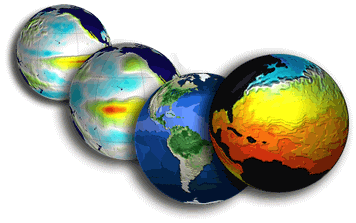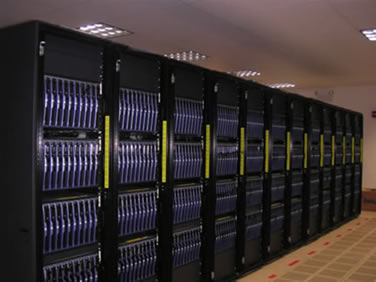|
CLIMATE RESEARCH GROUP
The Climate Research Group at the University of Utah is interested in the general circulation of the atmosphere
and large-scale climate variability. We are primarily interested in processes that have global impacts,
large spatial scales, and relatively long time scales (weeks and longer). The group analyzes simple and
complex models and also observational records to study how the atmospheric circulation responds to climate
change and how the components of the climate (e.g., stratosphere, troposphere, sea ice, ocean) interact
with each other. Current areas of focus include stratosphere-troposphere interactions, the poleward expansion
of the general circulation, and decadal scale variations in climate. Our research helps to improve
the predictability of weather on weekly to monthly time scales and the certainty of future climate predictions.
Projects
Our goal is to contribute to a better understanding of human impacts on our atmospheric environment and to improve predictions of natural and man-made climate variations on all time scales.
[Link]
 Group
Group
The University of Utah's Climate Research Group consists of several graduate students who are guided by Professor Thomas Reichler.
Funding
The work of the Climate Research Group is sponsored by grants from the National Science Foundation
(NSF),
the National Oceanic and Atmospheric Administration
(NOAA),
the Department of Energy
(DOE),
and the National Aeronautics and Space Administration
(NASA).
Tools
For our numerical modeling work we utilize idealized general circulation models and also complex climate models. Some of our work also uses the regional WRF model. Another important aspect of our work is the analysis of large climate data sets, including output from global climate models, reanalyses, in-situ observations, and satellite data. These data sets are typically analyzed using the Interactive Data Language IDL.
Facilities
 Most of our numerical simulations are carried out at University of Utah's Center for High Performance Computing
CHPC,
which maintains a large computer cluster (3000+ CPUs) for general scientific computing. We also utilize external computing facilities provided by various national centers
(NERSC,
NCAR).
Most of our numerical simulations are carried out at University of Utah's Center for High Performance Computing
CHPC,
which maintains a large computer cluster (3000+ CPUs) for general scientific computing. We also utilize external computing facilities provided by various national centers
(NERSC,
NCAR).
This page has been visited
[an error occurred while processing this directive]
times since Tuesday, 20-Feb-2018 16:43:26 MST
|